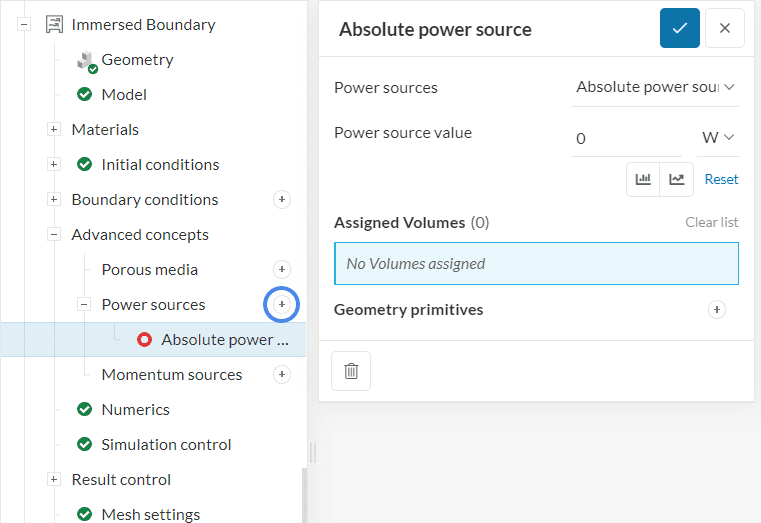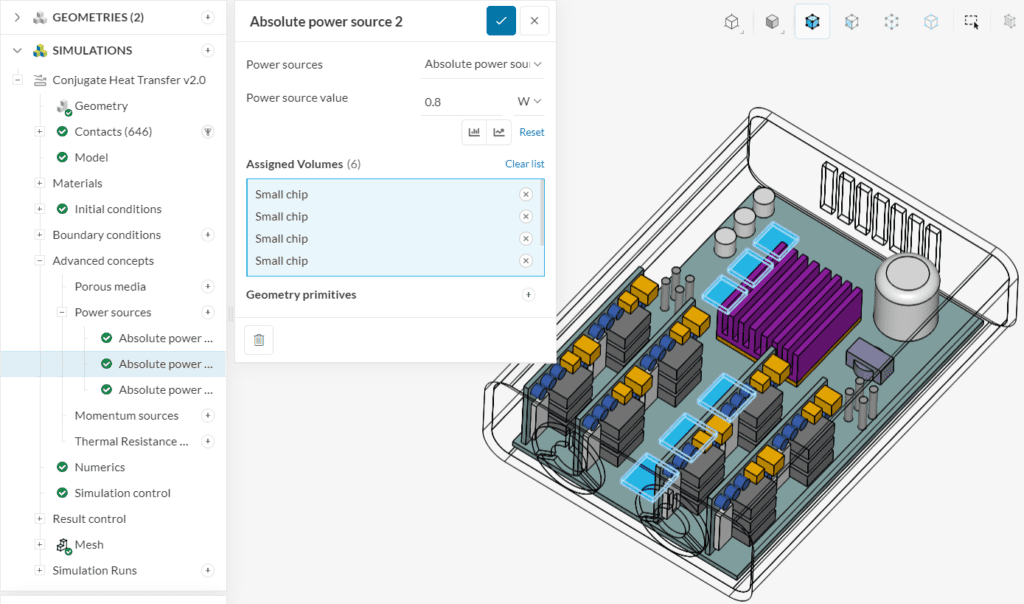Documentation
Power sources or heat sources can be used to simulate heat generation from a volume. Application examples include electronic equipment and HVAC systems, e.g., to model heat generated by chips on a circuit board.
SimScale currently supports power sources within four analysis types:
In all cases, the power source has to be assigned to a volume which can be one of the following:
Both watts \((W)\) and British thermal units \((Btu/s)\) are allowed to define power.
In the simulation tree, navigate to Advanced Concepts and add a Power source by clicking on the ‘+’ button (circled). Absolute and Specific power sources are supported.

Did you know?
Power sources are supported in parametric studies within SimScale. To define the power sources of interest and run a parametric experiment, you can click on this button:
This article provides more details about the setup of parametric experiments.
This type of source has to be used when the total power emitted by the heating element is known. The user is required to provide this value and choose the relevant volume region in the domain.
This type of source has to be used when the power density is known. This is simply total power per unit volume in \(m^3\) or \(in^3\). This quantity is often provided for batteries and fuel cells, for example.
Important
If a power source is applied to multiple entities, each of them will generate the prescribed power value. For example, if a heat source with a value of 100 \(W\) is assigned to two entities, each will emit 100 \(W\).

Note
If you assign a negative value to a power source, it will extract heat from the system acting as a heat sink.
Last updated: June 15th, 2023
We appreciate and value your feedback.
Sign up for SimScale
and start simulating now